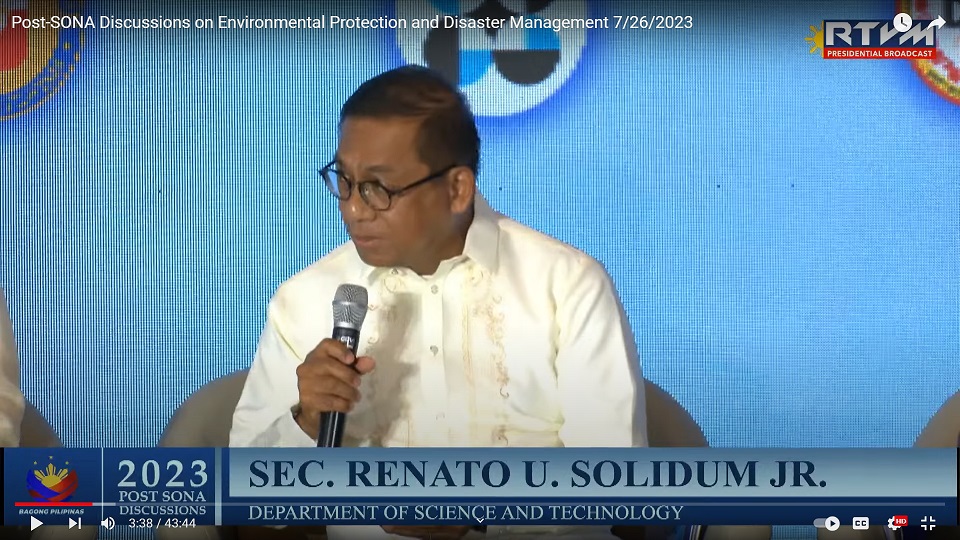The Philippines is a country that is no stranger to natural hazards. Typhoons, earthquakes, and volcanic eruptions are all too common, and the effects of climate change could only make them worse.
In recent years, the Department of Science and Technology (DOST) has been working hard to improve the country's disaster prevention, mitigation and resilience. Under the leadership of Secretary Renato Solidum, Jr., the DOST has developed a number of innovative technologies and programs to help communities cope with disasters.

During the recent post-SONA (State of the Nation Address of President Ferdinand R. Marcos Jr.) discussions, Secretary Solidum revealed that one of the most important initiatives of the DOST is the GeoRisk Philippines Initiative. This is a multi-agency platform that collects and analyzes data on natural hazards. The information gathered by GeoRisk Philippines is then used to create risk maps and other tools that can help communities prepare for disasters.
Another important initiative of the DOST is the Plan Smart Ready to Rebuild app. This app helps local governments develop recovery plans in the event of a disaster. The app uses data from GeoRisk Philippines to generate a customized recovery plan for each community.
In addition to these initiatives, the DOST is also working to develop new technologies that can help communities cope with natural hazards.
"So, how do we actually help other organizations prepare? We have developed out of the GeoRisk Philippines platform, the first-ever automated planning for recovery – the ‘Plan Smart Ready to Rebuild’ – together with Office of Civil Defense and the World Bank where we developed an app we use – type the name of a city or town, it will prepare the socioeconomic physical profile, the hazard maps, the exposure, the possible impacts. And what you do is to look at intervention options appropriate to the impact that has happened and just using down/drop menu options, you select the intervention and push the button, the app will prepare a recovery plan for you," Solidum said.
"This will revolutionize the planning for recovery which would usually take months because a local government would need to find an expert, hazards assessment expert, a geographic information specialist expert and a person who can write good English [laughs] – but the app can do it all for you," he added.
The work of the agency is essential to the future of the Philippines. As the country becomes increasingly vulnerable to natural hazards, the DOST's work is helping to make communities more resilient and better prepared for the future.
The science department's work is not just about science and technology. It is also about people. The DOST is working to empower communities to take control of their own disaster preparedness. The Plan Smart Ready to Rebuild app is a powerful tool that can help communities to develop their own customized recovery plans.
The agency's work is also about hope. The DOST is showing the Philippines that it is possible to build a more resilient future. By working together, the government and the Filipino people can overcome the challenges of disaster events and build a brighter future for the country.
In the words of Secretary Solidum, "If you know the enemy and know yourself, you need not fear the result of a hundred battles." The DOST is helping the Philippines to know its enemies - the natural hazards that threaten the country - and to know itself - its strengths and weaknesses in the face of disaster. By doing so, the DOST is helping the Philippines to win the battle in all fronts. (PIA-NCR)



